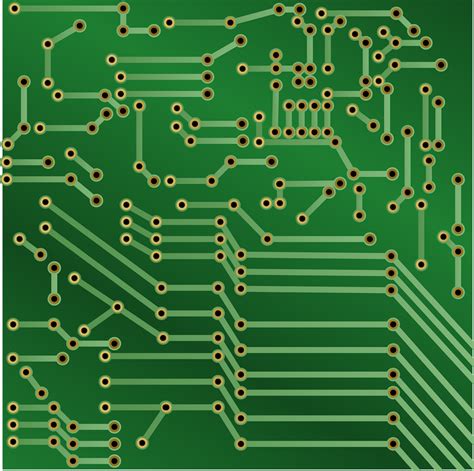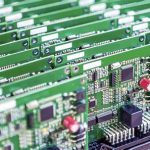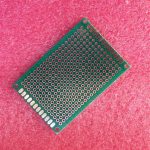Introduction to PCB Art
PCB art, short for printed circuit board art, is a unique form of electronic artwork that uses functional circuit boards as the canvas. By creatively designing the copper traces, solder mask, and silkscreen layers of a PCB, artists can create stunning visual designs while maintaining the board’s electronic functionality. This innovative blend of art and engineering has gained popularity among makers, hobbyists, and artists alike.
In this ultimate guide, we will explore the world of PCB art, its advantages over traditional art forms, and how you can get started creating your own PCB masterpieces.
The Advantages of PCB Art
Durability and Longevity
One of the most significant advantages of PCB art is its durability. Unlike traditional art forms such as paintings or sculptures, which can be fragile and susceptible to damage, PCBs are designed to withstand the rigors of electronic use. The materials used in PCB Fabrication, such as FR4 substrate, copper, and solder mask, are inherently sturdy and resistant to wear and tear.
Moreover, the process of manufacturing PCBs involves subjecting the boards to high temperatures and pressures, further enhancing their durability. This means that PCB artwork can last for decades without deteriorating, ensuring that your artistic creations will stand the test of time.
Reproducibility and Scalability
Another major benefit of PCB art is its reproducibility. Traditional art forms often rely on the artist’s unique skills and techniques, making it challenging to create exact replicas of a piece. In contrast, PCB art is designed using computer-aided design (CAD) software, which allows for precise control over every aspect of the design.
Once a PCB art design is finalized, it can be easily reproduced by sending the design files to a PCB manufacturing service. This enables artists to create multiple copies of their work without compromising on quality or detail. Additionally, PCB designs can be scaled up or down to accommodate different board sizes, making it possible to create both small, intricate pieces and large, impressive installations.
Functionality and Interactivity
Perhaps the most unique aspect of PCB art is its ability to combine artistic expression with electronic functionality. By incorporating components such as LEDs, sensors, and microcontrollers into their designs, PCB artists can create interactive and dynamic artworks that respond to their environment or user input.
For example, a PCB art piece could feature LED lighting that changes color based on the ambient temperature, or a capacitive touch sensor that triggers an animation when touched by a viewer. This fusion of art and technology opens up a world of possibilities for creating engaging and immersive experiences.
Cost-effectiveness and Accessibility
Compared to many traditional art forms, PCB art is relatively cost-effective and accessible. The materials and tools required for PCB design, such as CAD software and PCB manufacturing services, are widely available and affordable. Many PCB Manufacturers offer low-cost Prototyping Services, allowing artists to create small batches of their designs without breaking the bank.
Furthermore, the increasing popularity of maker communities and online resources has made it easier than ever to learn about PCB design and fabrication. Websites like Instructables, Hackaday, and GitHub are filled with tutorials, project ideas, and open-source designs that can help newcomers get started with PCB art.
Getting Started with PCB Art
Learning PCB Design Basics
To create PCB art, you’ll need to familiarize yourself with the basics of PCB design. This involves understanding the different layers that make up a PCB, such as the copper traces, solder mask, and silkscreen, as well as the design rules and constraints that ensure the board’s manufacturability and functionality.
Fortunately, there are many resources available online to help you learn PCB design. Websites like SparkFun and Adafruit offer beginner-friendly tutorials and guides, while YouTube channels like EEVblog and GreatScott! provide in-depth video tutorials on PCB design and electronics.
Choosing PCB Design Software
To design your PCB art, you’ll need to use CAD software specifically designed for PCB layout. Some popular options include:
| Software | License | Platforms | Ease of Use | Community Support |
|---|---|---|---|---|
| KiCad | Open-Source | Windows, macOS, Linux | Beginner-friendly | Excellent |
| Eagle | Commercial (Free for non-commercial use) | Windows, macOS, Linux | Intermediate | Good |
| Altium Designer | Commercial | Windows | Advanced | Limited |
| Fritzing | Open-Source | Windows, macOS, Linux | Beginner-friendly | Good |
For beginners, KiCad and Fritzing are excellent choices due to their user-friendly interfaces, extensive documentation, and active community support. As you gain more experience, you may want to consider moving to more advanced software like Eagle or Altium Designer.
Finding Inspiration and Ideas
One of the best ways to get started with PCB art is to draw inspiration from existing designs and projects. Websites like PCBWay, OSH Park, and Hackaday regularly showcase impressive PCB art projects, providing a wealth of ideas and techniques to explore.
You can also find inspiration in traditional art forms, such as painting, sculpture, and graphic design. Consider how you can translate the principles and aesthetics of these art forms into the medium of PCBs, using the unique properties of copper traces, solder mask, and silkscreen to create compelling visual designs.
Designing Your PCB Art
With a basic understanding of PCB design and some inspiration in mind, you’re ready to start designing your own PCB art. Here are some tips to keep in mind:
- Start with a simple design: Begin with a basic shape or pattern, and gradually add complexity as you become more comfortable with the design process.
- Experiment with different layers: Use the copper, solder mask, and silkscreen layers creatively to add depth, color, and texture to your design.
- Incorporate electronic components: Consider how you can use components like LEDs, sensors, and buttons to enhance your design’s visual appeal and interactivity.
- Follow design rules: Make sure your design adheres to the manufacturing constraints and design rules specified by your chosen PCB manufacturer to ensure successful fabrication.
- Iterate and refine: Don’t be afraid to make multiple revisions of your design, incorporating feedback and improvements along the way.
Manufacturing Your PCB Art
Once you’ve finalized your PCB art design, it’s time to send it off for manufacturing. Many PCB manufacturers, such as PCBWay, JLCPCB, and OSH Park, offer affordable Prototyping Services with quick turnaround times.
When preparing your design files for manufacturing, be sure to follow the manufacturer’s guidelines for file formats, layer specifications, and design rules. Most manufacturers accept standard file formats such as Gerber and Excellon, and will provide detailed instructions on how to export your design files from your chosen CAD software.

FAQ
-
Do I need to have a background in electronics to create PCB art?
While having some knowledge of electronics can be helpful, it’s not strictly necessary to create PCB art. Many artists and designers approach PCB art from a purely visual perspective, focusing on the aesthetic qualities of the copper traces and solder mask rather than the board’s electronic functionality. -
How much does it cost to manufacture PCB art?
The cost of manufacturing PCB art varies depending on factors such as the board size, number of layers, and quantity ordered. However, many PCB manufacturers offer affordable prototyping services, with prices starting around $5-10 per board for small quantities. As you order larger quantities, the price per board typically decreases. -
Can I sell my PCB art designs?
Yes, you can sell your PCB art designs! Many artists and designers sell their PCB art creations online through platforms like Etsy, Tindie, and personal websites. When selling your designs, be sure to consider factors such as pricing, shipping, and packaging to ensure a smooth transaction for both you and your customers. -
How can I display my PCB art?
There are many creative ways to display PCB art, depending on the size and style of your design. Some popular options include: - Framing the PCB behind glass or acrylic
- Mounting the PCB on a wooden or metal backing
- Incorporating the PCB into a larger sculpture or installation
-
Using the PCB as a functional component in an electronic project, such as a custom synth module or Arduino shield
-
Are there any competitions or events focused on PCB art?
Yes, there are several competitions and events that celebrate PCB art and design. One notable example is the annual Badgelife competition at DEF CON, which challenges participants to create unique and creative electronic conference badges. Other events, such as Maker Faire and PCB Design Conference, often feature exhibitions and talks related to PCB art and design.
Conclusion
PCB art represents an exciting intersection of art, technology, and innovation, offering a unique medium for creative expression and exploration. By leveraging the durability, reproducibility, and functionality of printed circuit boards, artists and designers can create stunning visual works that push the boundaries of traditional art forms.
As you embark on your own journey into the world of PCB art, remember to start simple, experiment with different techniques and materials, and draw inspiration from the vibrant community of PCB artists and enthusiasts around the world. With dedication, curiosity, and a willingness to learn, you’ll soon be creating your own PCB masterpieces that showcase the incredible potential of this fascinating medium.






Leave a Reply